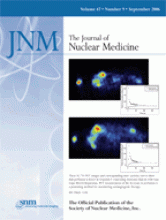Abstract
This study was undertaken to test the effect of sequential administration of an opioid and intravenous cholecystokinin (CCK) on gallbladder ejection fraction. Methods: Forty-nine patients who had received an opioid underwent quantitative cholescintigraphy with octapeptide of CCK (CCK-8). Gallbladder ejection fraction and CCK-8–induced paradoxical filling were calculated. Results: In the basal state, more of the hepatic bile entered the gallbladder (67%) than the small intestine (33%). After CCK-8 infusion, gallbladder ejection fraction was low in 37 (76%) of 49 patients and normal in 12 (24%). All 5 types of opioids lowered ejection fraction. CCK-induced paradoxical filling of the gallbladder was noted in 7 patients, but only one showed paradoxical filling of greater than 20% and none had a normal gallbladder ejection fraction. The lowering effect of opioids on gallbladder ejection fraction may last as long as 18 h after intake. Conclusion: CCK-8 produced a normal gallbladder ejection fraction in 24% of patients who had received an opioid and thus could exclude both acute and chronic cholecystitis during a single hepatobiliary study.
Footnotes
-
COPYRIGHT © 2006 by the Society of Nuclear Medicine, Inc.







